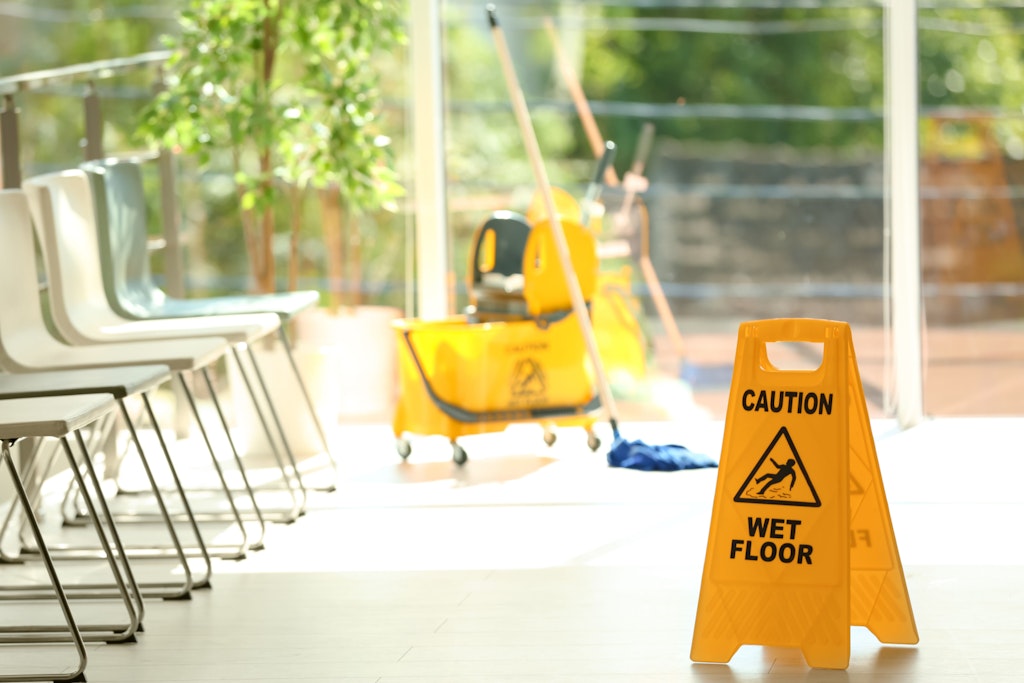Researchers call on employers to reduce the risk of falls in older female workers
Last updated on 2 February 2024

A concerning workplace trend has emerged and aged care organisations are among those most susceptible as research shows an alarming spike in the number of women experiencing workplace falls.
The prevalence of same-level falls in women aged 50 and over is also likely to increase as more women are working longer, presenting a new and unique challenge to employers with highly feminised workforces.
Key points
- Researchers from Monash University found that one in five hospital admissions for a work-related injury were associated with a fall
- Workplace falls from height – such as a ladder, scaffold, stairs or building – are more common (52%) among male employees, while there is a second spike among women aged 45 and older experiencing same-level falls (37%)
- Women are more likely to experience same-level falls and fall-related injuries if comorbidity is present, such as circulatory, respiratory, and musculoskeletal conditions
One of the report’s co-authors, Professor Karen Walker-Bone from the School of Public Health and Preventive Medicine’s Monash Centre for Occupational and Environmental Health, told hello leaders that they expected to see recurring hospitalisations due to falls from height, but they were surprised by the prevalence of severe same-level falls that resulted in hospitalisations.
“We’ve known for years that you tend to see a peak of falls in young men aged 20 to 40. What we weren’t expecting was another big peak of falls in women aged 40 plus. These falls weren’t the typical ones off ladders, they were the slips and trips that happen every day and for many of us there is no serious damage,” Professor Walker-Bone said.
“But for these older women workers, they’re falling on the same level but still doing enough damage to be admitted to hospital with substantial personal and workplace impact. We’re right at the extreme end of falls.”
One of the likely reasons for middle-aged and older women being hospitalised after a work fall is the onset of early osteoporosis. Simply reaching out to stop falling can result in someone breaking their wrist, leading to surgery, rehabilitation or therapy.
Professor Walker-Bone explained this can easily result in an employee being unable to work for at least eight weeks, causing major inconvenience to both themselves and their workplace. And unlike past generations, many older women want to work longer, but also, need to work longer.

“My mother and my grandmother were not working aged 40 plus in the workplace and that’s changed in one generation; many more women are working throughout their life, particularly in aged care and healthcare sectors,” she added.
“The number of women aged 40 plus who staff aged care, it’s the majority, and if you’re the employer in a large aged care facility having women slip over at work is going to be an increasing worry with an increasing consequence for you as the employer.”
What you can do to prevent falls
- Ensure all floor surfaces have some texture to help create friction or at the very least, avoid overly smooth surfaces
- Provide clear signage for wet floors, uneven surfaces, stairs or potential hazards
- Encourage staff to wear sturdy shoes that also have good grip and tread on the sole
- Focus on physical health and well-being interventions that can help your workforce, e.g. offering gym memberships through partnerships or facilitating healthy diets
One potential prevention is a generalised workplace approach to staff health and well-being where individuals are encouraged to share information about chronic conditions such as arthritis or osteoporosis that could increase the severity of a fall.
However, some do argue that employees should not have to share that information if they don’t want to, particularly if they’re older and are at risk of not returning to work.
“It’s a slight bias against older workers. It’s more difficult for them to obtain work but also they lose their confidence and the social group that was supporting them in the workplace. Everything can move on quite quickly if someone is out of work for six to nine months,” Professor Walker-Bone said.
Instead, employers can look at their overarching health and well-being policies to devise solutions that are preventative and promote healthy living.
“Rather than making it the employee’s responsibility or singling them out because they have a diagnosis of something, approach the whole workforce with a health and well-being lens where you provide healthy alternatives, you give opportunities for physical exercise, you try and promote cessation of smoking.”
“All those basic things create a healthy work environment for all and it prevents you from having to single people out,” she added.
Professor Walker-Bone is also conducting additional research into what aged care staff would like from their employers to better promote their health and well-being, including what interventions can support them while working on-site or in a home care setting.